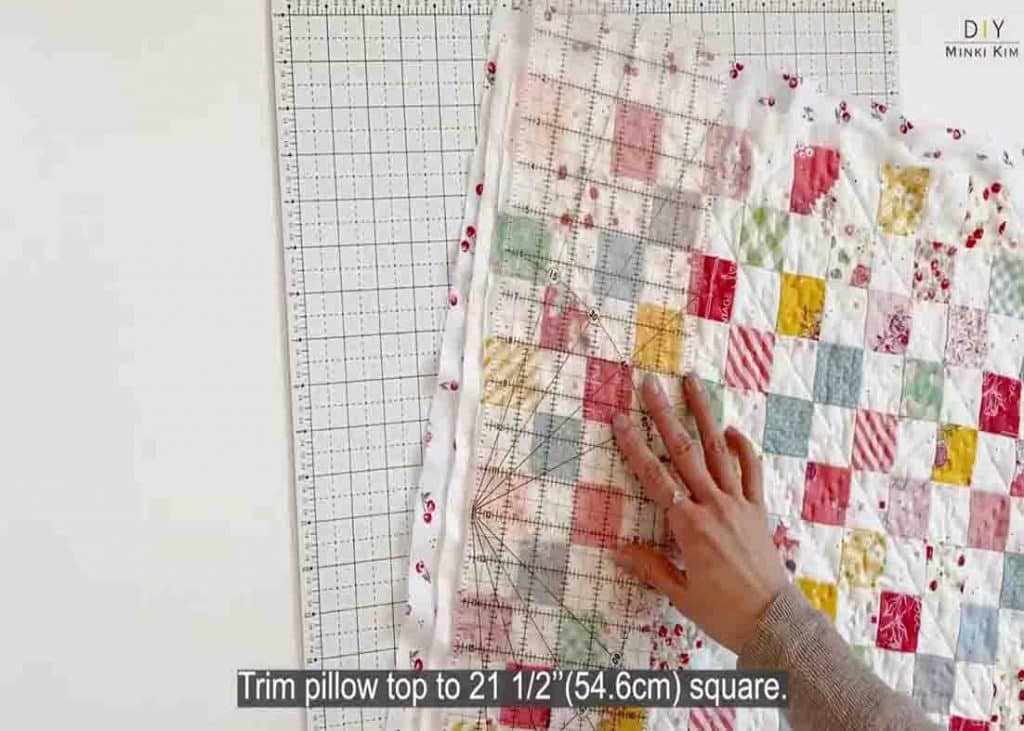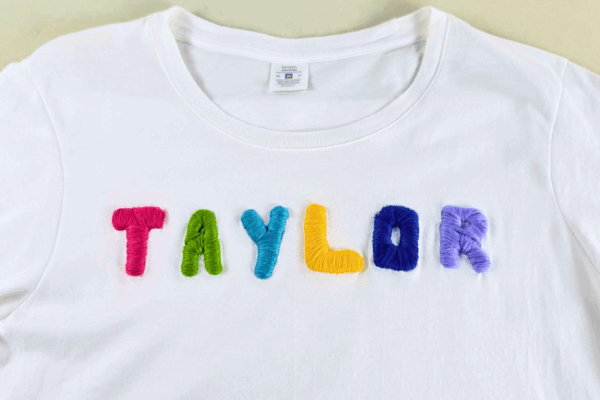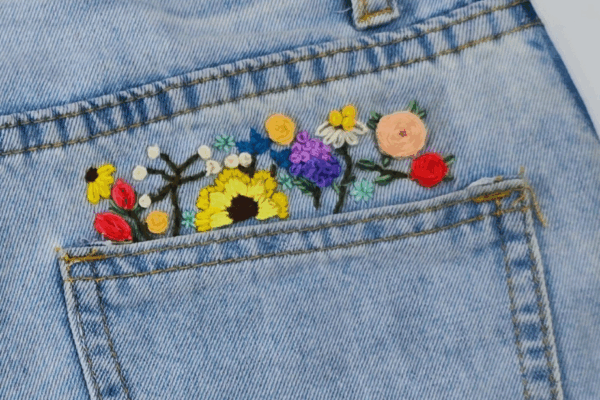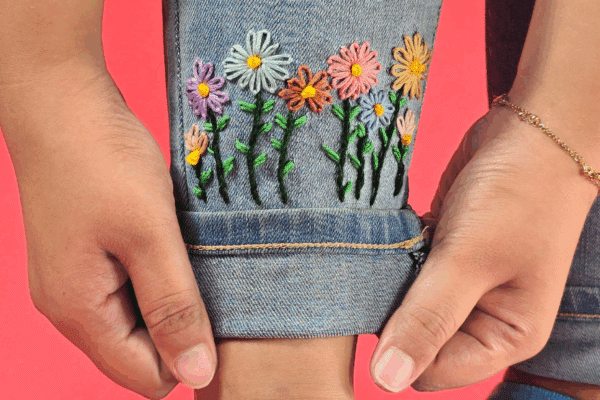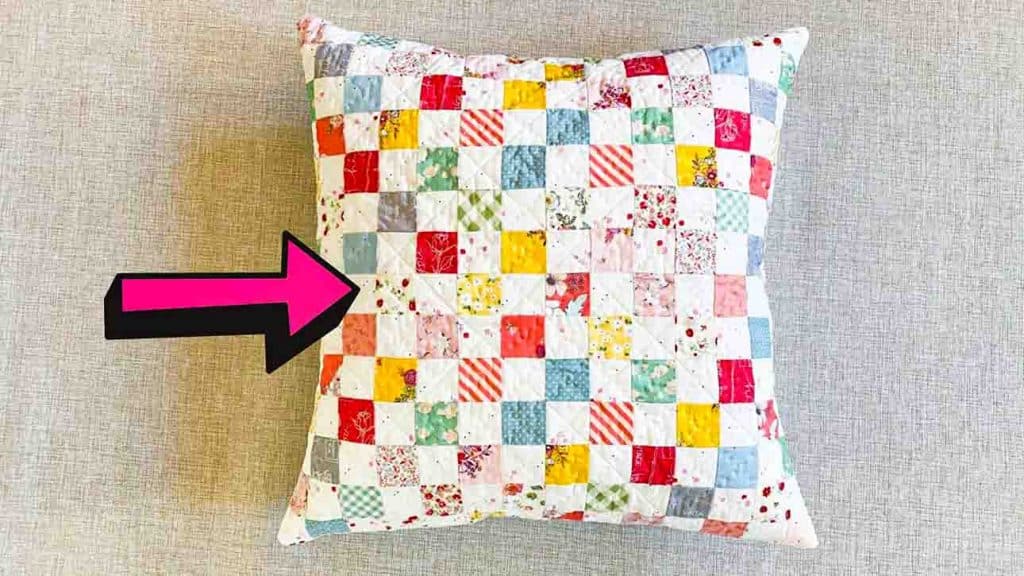
As a quilter, doing patchwork can be tedious at times. But with this fast and easy way from Minki Kim on Youtube, doing patchwork will be so much easier! Instead of sewing individual squares together, this tutorial will let you do it 3x faster. You can apply this technique not just for pillow covers; but to other quilts too. Watch the video tutorial below to learn this.
Materials:
- Assorted print: Fourteen (14) 2’’(5cm) x 8”(20cm) strips
Fourteen (14) 2’’(5cm) x 6”(20cm) strips
- White fabric: Fourteen (14) 2’’(5cm) x 8”(20cm) strips
Fourteen (14) 2’’(5cm) x 6”(20cm) strips
- Backing fabric: one (1) 23’’ x 23’’(58.5cm)
one (1) 21 1/2”(54.6cm) x 21” (53.3cm)
one (1) 21 1/2”(54.6cm) x 29 1/2” (75cm)
- Cotton batting: 22 1/2’’ x 22 1/2’’(57cm)
Directions:
Step 1
Starting from a print strip, arrange (7) 2″ x 8″ (5cm x 20cm) print strips and (7) white strips. (Fabric is from IDYLLIC collection & assorted scraps.) Next, stitch together to make 21 1/2″ x 8″ (54.6cm x 20cm) rectangle. Press the seam allowances to the wrong side of the fabric. Now, starting from the white strip, arrange the second row of (7) 2″ x 8″ (5cm x 20cm) print strips and (7) white strips. Sub-cut the rectangle to (4) 2″ x 21 1/2″(5″ x 54.6cm) long strips. For the third patchwork rectangle, arrange (7) 2″ x 6″ (5cm x 15.2cm) print strips and (7) white strips. Repeat it for the fourth patchwork rectangle. Now, you have 14 rows of 2″ x 21 1/2″ patchwork strips. Sew together all the rows to make 21 1/2″ patchwork square.
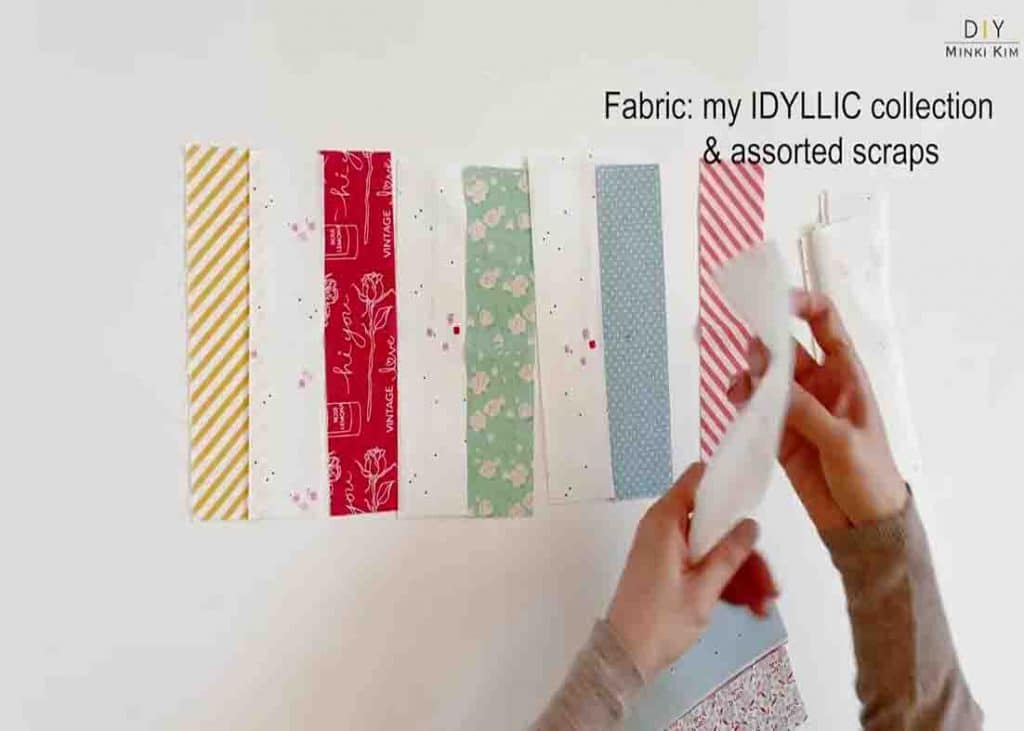
[social_warfare]
Step 2
After sewing, press the seams in one direction or opposite direction, it’s up to you. Next, with the right side down, place 23″ x 23″ (58.5cm) backing fabric on your table. Layer 22 1/2″ x 22 1/2″ (57cm) cotton batting and patchwork on top. Draw a guideline for the quilting. Set a walking foot and stitch length 3.0. (Quilt along the guideline.) Press to remove the marks (if you used a frixion pen, it will disappear with heat.) Trim pillow top to 21 1/2″(54.6cm) square. After this, with the wrong side inside, fold (1) 21 1/2″ x 21″ and (1) 21 1/2″ x 29 1/2″ in half to form double-thick. With the right side up, place patchwork on your table and then layer a small rectangle on top. Layer the big rectangle, overlapping folded edges about 4″ (10cm). Clip to secure. Next, stitch through the layers all the way around. Stitch across overlaps again on side edges for strength. Do a zigzag stitch all the way around the raw edges. Now, turn the pillow cover inside out and it’s finished.
